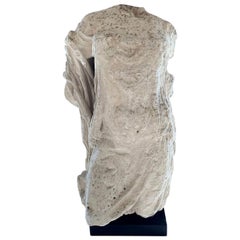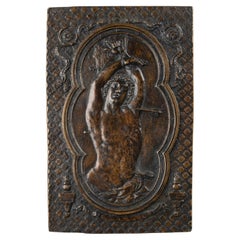Belgium - Decorative Objects
17th Century French Antique Belgium - Decorative Objects
Sandstone
16th Century French Renaissance Antique Belgium - Decorative Objects
Sandstone
17th Century French Rustic Antique Belgium - Decorative Objects
Metal
18th Century Italian Grand Tour Antique Belgium - Decorative Objects
Limestone, Marble
17th Century Italian Baroque Antique Belgium - Decorative Objects
Bronze
17th Century Italian Baroque Antique Belgium - Decorative Objects
Bronze
15th Century and Earlier French Gothic Antique Belgium - Decorative Objects
Stone
17th Century Portuguese Louis XIII Antique Belgium - Decorative Objects
Wood
Early 18th Century Italian Grand Tour Antique Belgium - Decorative Objects
Marble
17th Century Italian Baroque Antique Belgium - Decorative Objects
Wood
15th Century and Earlier Italian Medieval Antique Belgium - Decorative Objects
Marble
Mid-18th Century Spanish Antique Belgium - Decorative Objects
Softwood
18th Century Belgian Rustic Antique Belgium - Decorative Objects
Ceramic
Late 18th Century Italian Louis XV Antique Belgium - Decorative Objects
Carrara Marble
15th Century and Earlier Italian Renaissance Antique Belgium - Decorative Objects
Pewter
16th Century Belgian Renaissance Antique Belgium - Decorative Objects
Wood
15th Century and Earlier Italian Renaissance Antique Belgium - Decorative Objects
Marble
16th Century Belgian Renaissance Antique Belgium - Decorative Objects
Oak
16th Century Italian Renaissance Antique Belgium - Decorative Objects
Wood, Giltwood
15th Century and Earlier French Gothic Antique Belgium - Decorative Objects
Sandstone
18th Century French Antique Belgium - Decorative Objects
Marble
18th Century Belgian Dutch Colonial Antique Belgium - Decorative Objects
Shell
18th Century Antique Belgium - Decorative Objects
Brass
17th Century French Renaissance Antique Belgium - Decorative Objects
Bronze
17th Century French Renaissance Antique Belgium - Decorative Objects
Wood
16th Century Italian Antique Belgium - Decorative Objects
Bronze
18th Century Antique Belgium - Decorative Objects
Agate, Brass
15th Century and Earlier Afghan Archaistic Antique Belgium - Decorative Objects
Alabaster
17th Century Italian Renaissance Antique Belgium - Decorative Objects
Marble
17th Century French Louis XIV Antique Belgium - Decorative Objects
Alabaster, Griotte Marble
17th Century German Antique Belgium - Decorative Objects
Marble, Bronze
15th Century and Earlier French Medieval Antique Belgium - Decorative Objects
Stone
Early 17th Century Spanish Renaissance Antique Belgium - Decorative Objects
Brass
15th Century and Earlier Italian Renaissance Antique Belgium - Decorative Objects
Terracotta
Mid-18th Century Italian Neoclassical Antique Belgium - Decorative Objects
Marble
17th Century Chinese Ming Antique Belgium - Decorative Objects
Ceramic, Porcelain
Mid-18th Century Spanish Antique Belgium - Decorative Objects
Marble
17th Century French Baroque Antique Belgium - Decorative Objects
Sandstone
Late 18th Century French Antique Belgium - Decorative Objects
Brass
15th Century and Earlier Antique Belgium - Decorative Objects
Griotte Marble, Bronze
18th Century Italian Country Antique Belgium - Decorative Objects
Marble
18th Century Spanish Other Antique Belgium - Decorative Objects
Wood
17th Century Antique Belgium - Decorative Objects
Iron
Late 18th Century Italian Other Antique Belgium - Decorative Objects
Wood
18th Century British Georgian Antique Belgium - Decorative Objects
Oak
15th Century and Earlier French Antique Belgium - Decorative Objects
Sandstone
18th Century Italian Rococo Antique Belgium - Decorative Objects
Silver
15th Century and Earlier Italian Classical Roman Antique Belgium - Decorative Objects
Marble
17th Century Italian Renaissance Antique Belgium - Decorative Objects
Bronze
1750s Italian Baroque Antique Belgium - Decorative Objects
Wood
15th Century and Earlier French Gothic Antique Belgium - Decorative Objects
Alabaster
18th Century Dutch Georgian Antique Belgium - Decorative Objects
Sterling Silver
15th Century and Earlier French Medieval Antique Belgium - Decorative Objects
Limestone
16th Century Italian Renaissance Antique Belgium - Decorative Objects
Terracotta
Late 18th Century French Neoclassical Antique Belgium - Decorative Objects
Sandstone
15th Century and Earlier Belgian Medieval Antique Belgium - Decorative Objects
Wood
15th Century and Earlier Syrian Greco Roman Antique Belgium - Decorative Objects
Stone
18th Century Russian Louis XV Antique Belgium - Decorative Objects
Bone, Wood
Read More
African Travel Plans on Hold? This Ardmore Leopard Vase Brings the Beauty of the Savanna to You
It’s an excellent example of the sought-after ceramics coming out of South Africa’s KwaZulu-Natal province.
With a High-Tech Flagship and Cool Collabs, Lladró Is Breaking the Mold for Porcelain Production
Thanks to its new leadership, the Spanish maker of figurines, busts and lighting is on a mission to update the art of porcelain for the 21st century.
Zoë Powell’s Magnolia 05 Vessel Is Handmade from Clay She Unearthed Herself
The free-form stoneware piece is inspired by the magnolia tree and its associations with home.
8 Ways to Breathe New Life into a Space with Plants
The pair behind the Instagram account @houseplantclub share their tips for making any room of the house gloriously green.
Paris Gallerist Sandy Toupenet Gets Fired Up over 20th-Century Ceramics and Inventive New Makers
Her space on the city’s Left Bank mixes mid-century pieces by the likes of Jean Cocteau and Pablo Picasso with whimsical contemporary creations.
These Soft Sculptures Are Childhood Imaginary Friends Come to Life
Miami artist and designer Gabriela Noelle’s fantastical creations appeal to the Peter Pan in all of us.
This Vivacious Teapot Has Agnes Martin on One Side and Jean-Michel Basquiat on the Other
Ceramist Roberto Lugo brings a street-art sensibility to a dainty serving vessel while paying homage to his artistic heroes.
This Rare Set of 100 Alessi Vases Includes Designs by Scores of International Artists
Alessandro Mendini, Michael Graves, Ettore Sottsass and other design luminaries contributed to this unusual collection of porcelain wares representing a time capsule of late-20th-century decorative art.





